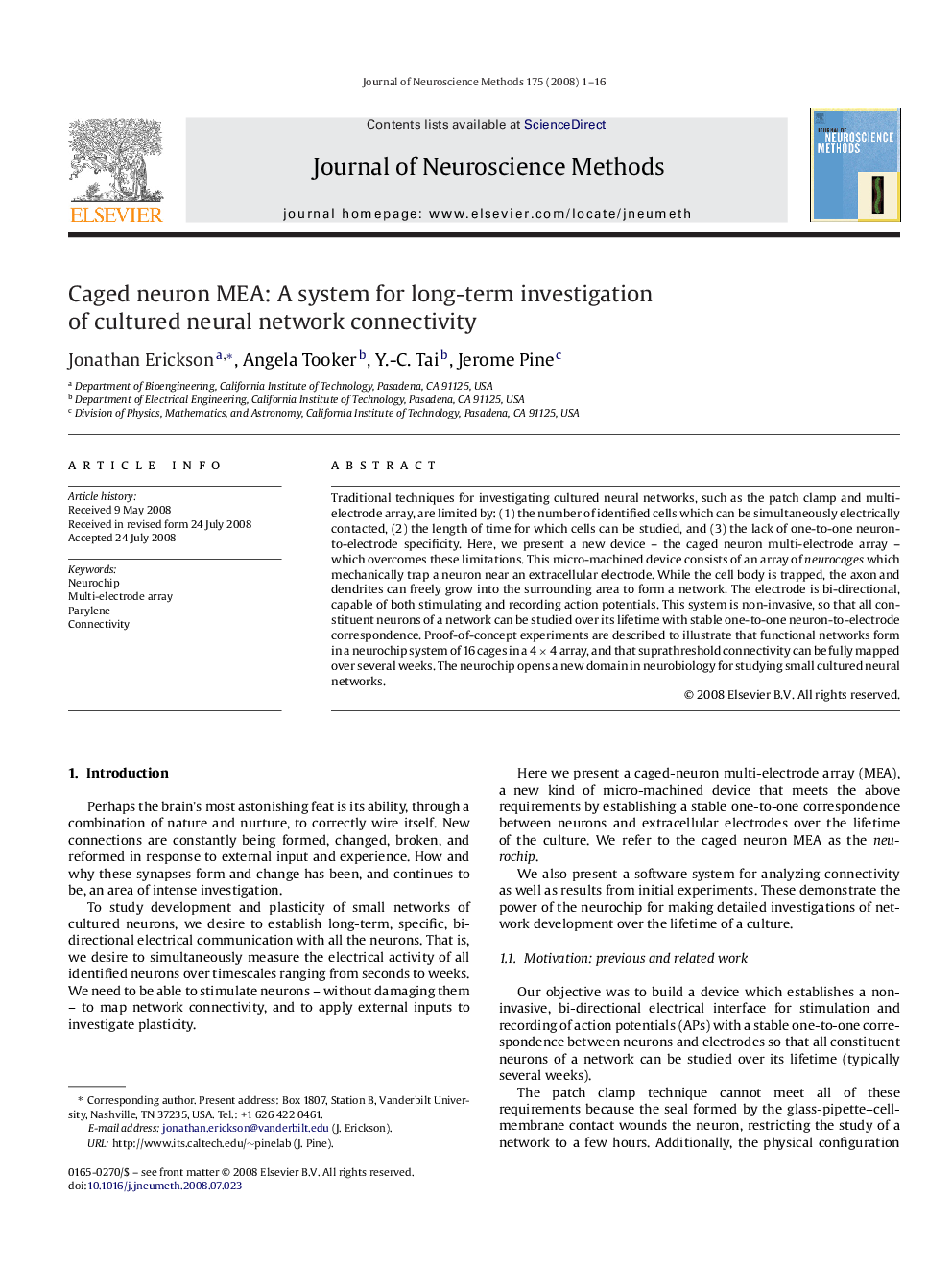| Article ID | Journal | Published Year | Pages | File Type |
|---|---|---|---|---|
| 4336125 | Journal of Neuroscience Methods | 2008 | 16 Pages |
Abstract
Traditional techniques for investigating cultured neural networks, such as the patch clamp and multi-electrode array, are limited by: (1) the number of identified cells which can be simultaneously electrically contacted, (2) the length of time for which cells can be studied, and (3) the lack of one-to-one neuron-to-electrode specificity. Here, we present a new device - the caged neuron multi-electrode array - which overcomes these limitations. This micro-machined device consists of an array of neurocages which mechanically trap a neuron near an extracellular electrode. While the cell body is trapped, the axon and dendrites can freely grow into the surrounding area to form a network. The electrode is bi-directional, capable of both stimulating and recording action potentials. This system is non-invasive, so that all constituent neurons of a network can be studied over its lifetime with stable one-to-one neuron-to-electrode correspondence. Proof-of-concept experiments are described to illustrate that functional networks form in a neurochip system of 16 cages in a 4Ã4 array, and that suprathreshold connectivity can be fully mapped over several weeks. The neurochip opens a new domain in neurobiology for studying small cultured neural networks.
Related Topics
Life Sciences
Neuroscience
Neuroscience (General)
Authors
Jonathan Erickson, Angela Tooker, Y.-C. Tai, Jerome Pine,
